- Quick take: The Apple A17 Pro chip, debuting in the iPhone 15 Pro and iPhone 15 Pro Max, sets a new standard in mobile computing with its 3nm process, 19 billion transistors, and groundbreaking GPU capabilities.
- Core insight: The A17 Pro not only offers unparalleled CPU performance but also introduces a transformative GPU that significantly impacts the mobile gaming landscape.
- What’s next: With the A17 Pro’s advanced architecture and capabilities, we can expect more console-quality games to be playable on mobile, and potentially a greater adoption of iPhones in professional settings requiring high-speed data transfer and computational power.
The Apple A17 Pro is the first-of-its-kind 3-nanometer chip, setting the stage for the iPhone 15 Pro and iPhone 15 Pro Max. With an impressive 19 billion transistors and a 6-core CPU, this chip offers unparalleled performance.
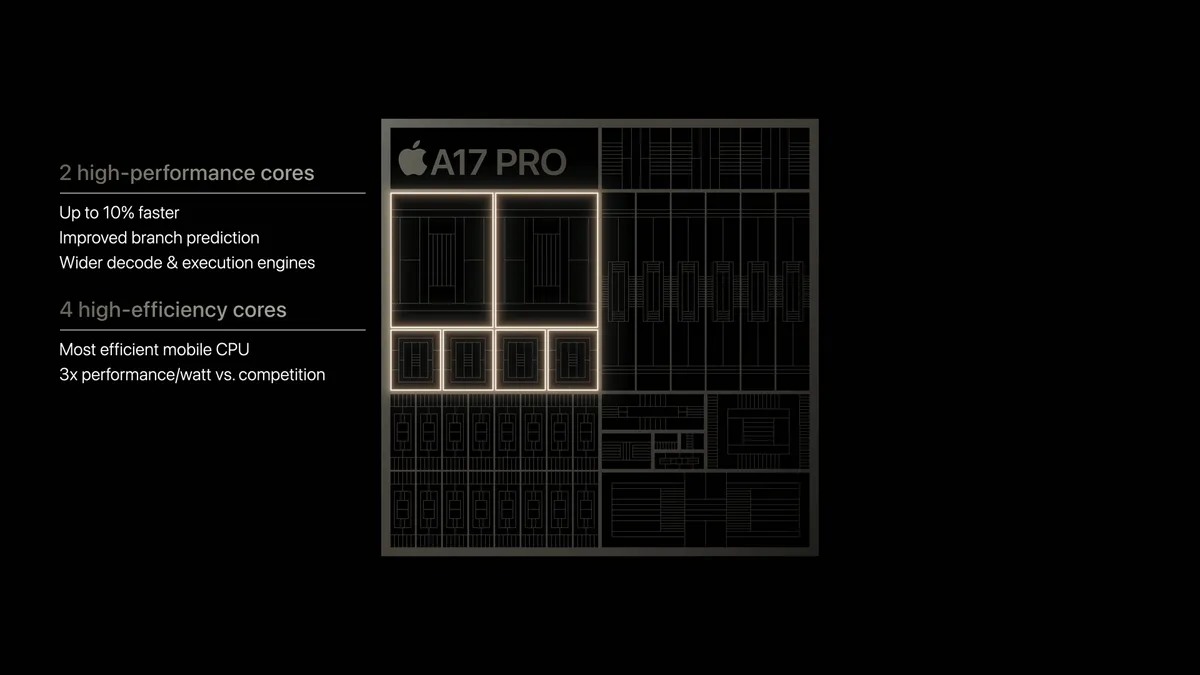
Apple A17 Pro GPU
The CPU houses two high-performance cores—dubbed by Apple as the “faster mobile CPU”—that outperform their predecessors by up to 10%. Additionally, four high-efficiency cores complement these powerhouses. The chip also features a 16-core neural engine capable of handling up to 35 trillion operations per second, adding another layer of speed to its list of capabilities.
Make most of Apple’s generative AI investments: How to use Siri
But that’s not all; the A17 Pro introduces a groundbreaking GPU with a novel custom shader architecture. According to Apple, this is the most significant transformation in the company’s GPU technology.
With six cores, the GPU delivers performance gains of up to 20% compared to the previous version. This GPU supports advanced features such as mesh shading and hardware-accelerated ray tracing. The ray-tracing capabilities are a staggering four times quicker than the software-based alternatives found in the A16 Bionic. Moreover, the GPU and neural engine team up to offer enhanced upscaling capabilities.
Gaming edge
The GPU in the Apple A17 Pro is being heralded as a game-changer in the mobile gaming landscape. This powerful chip has attracted the attention of developers who have displayed stunning graphics improvements in their games. Titles like Resident Evil Village and the Resident Evil 4 remake, originally designed for console and PC, will soon be playable on the iPhone 15 Pro and Pro Max. Other major releases like The Division: Resurgence and Genshin Impact were also showcased, and Ubisoft has announced plans to bring Assassin’s Creed Mirage to the iPhone in 2024.
For high-speed data transfer, the A17 Pro incorporates a USB 3 controller that supports speeds up to 10 Gbps. This capability surpasses that of the USB Type-C port on non-pro models, making it ideal for transferring pro-grade video swiftly to a Mac or recording directly to external storage. It also offers 4K60 ProRes support.
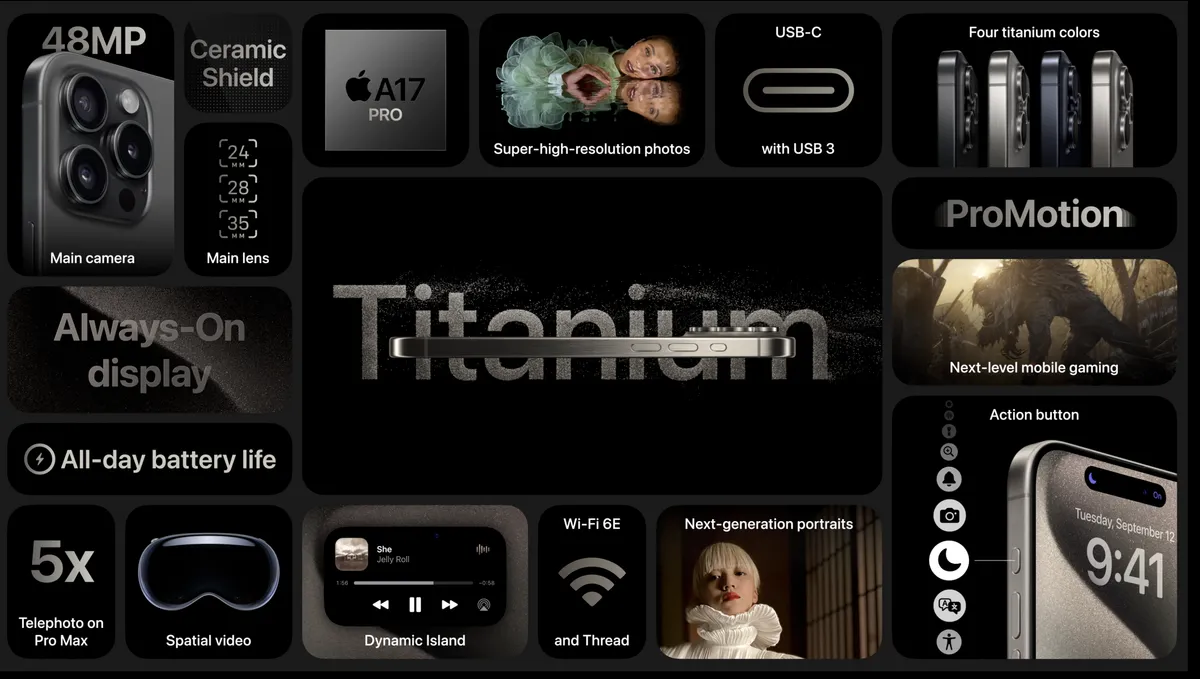
Adding to its roster of features, the chip includes a second-generation ultra-wideband unit, enhancing the precision of the Find My app and location-sharing functionalities.
The iPhone 15 Pro and its larger counterpart, the Pro Max, are stepping up their game in terms of build material as well. Apple is opting for grade 5 titanium over stainless steel, promising a lighter build.
These phones will also have the slimmest borders ever seen on an iPhone, allowing for a more compact design without compromising on screen size. Pro models will feature a new customizable action button in place of the traditional mute switch, granting users the flexibility to launch apps, activate the camera, or use other shortcuts at will.
| Feature Comparison | Apple A17 Pro | Apple A16 Bionic |
| Semiconductor Fabrication | 3nm | 4nm |
| Number of Transistors | 19 Billion | 16 Billion |
| CPU Core Configuration | 6 (2 High-Performance, 4 High-Efficiency) | 6 (2 High-Performance, 4 High-Efficiency) |
| GPU Core Count | 6 | 5 |
| Neural Core Count | 16 | 16 |
| Operations Per Second (Neural Engine) | 35 Trillion | 17 Trillion |
With the Apple A17 Pro chip at its core, the iPhone 15 Pro brings a revamped camera system that’s bound to excite photography enthusiasts. The primary camera is a 48MP sensor with an f/1.78 aperture, capable of shooting in 48MP HEIF at different focal lengths—24 mm, 28 mm, and 35 mm.
Additionally, the Pro model offers a new 12MP 3x telephoto lens. The iPhone 15 Pro Max goes a step further by providing a 5x zoom option, courtesy of its larger form factor. Both models use a sensor in the telephoto lens that is double the size of the one in the iPhone 14 Pro, enhancing image quality.
Image stabilization has also been upgraded. The iPhone 15 Pro Max boasts a three-axis optical image stabilization with an impressive 10,000 micro-adjustments per second, while the iPhone 15 Pro settles for a still-respectable two-axis system. Night mode photography receives a boost as well, thanks to a new 12MP ultra-wide camera.
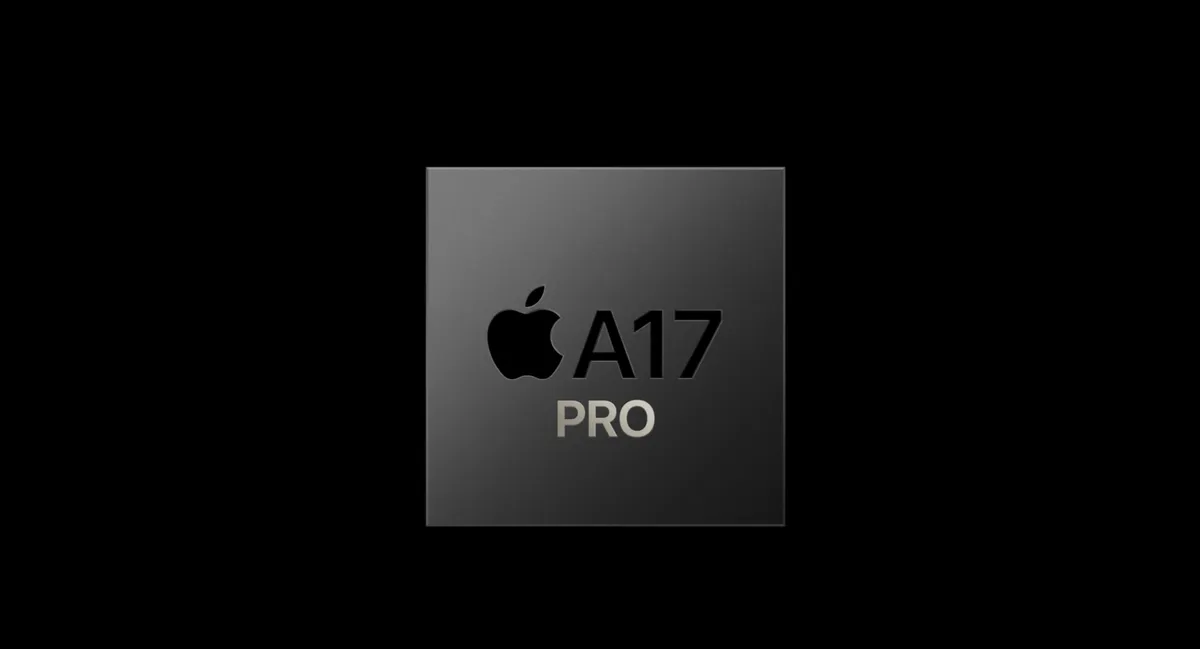
Another intriguing feature is the ability to shoot 3D video using both the ultrawide and main cameras. This will be incorporated into Apple Vision Pro, although it won’t be available at launch and will come later in an iOS 17 update.
As for pricing, the iPhone 15 Pro starts at $999 for the 128GB model, maintaining last year’s pricing strategy. The iPhone 15 Pro Max begins at $1,199 for the 256GB model. Pre-orders are set to begin this Friday, and the phones will be officially available on September 22.
Apple A16 Bionic powers the new iPhone 15 and 15 Plus models
Packed with the Apple A16 Bionic chip, the iPhone 15 and iPhone 15 Plus offer solid performance and a refreshed camera system. Staying true to the iPhone 14’s design, these models come in a variety of colors—pink, yellow, green, blue, or black—and are available with 6.1-inch and 6.7-inch displays. Apple has ported the Dynamic Island feature from the iPhone 14 Pro to these new displays for enhanced viewing experiences.
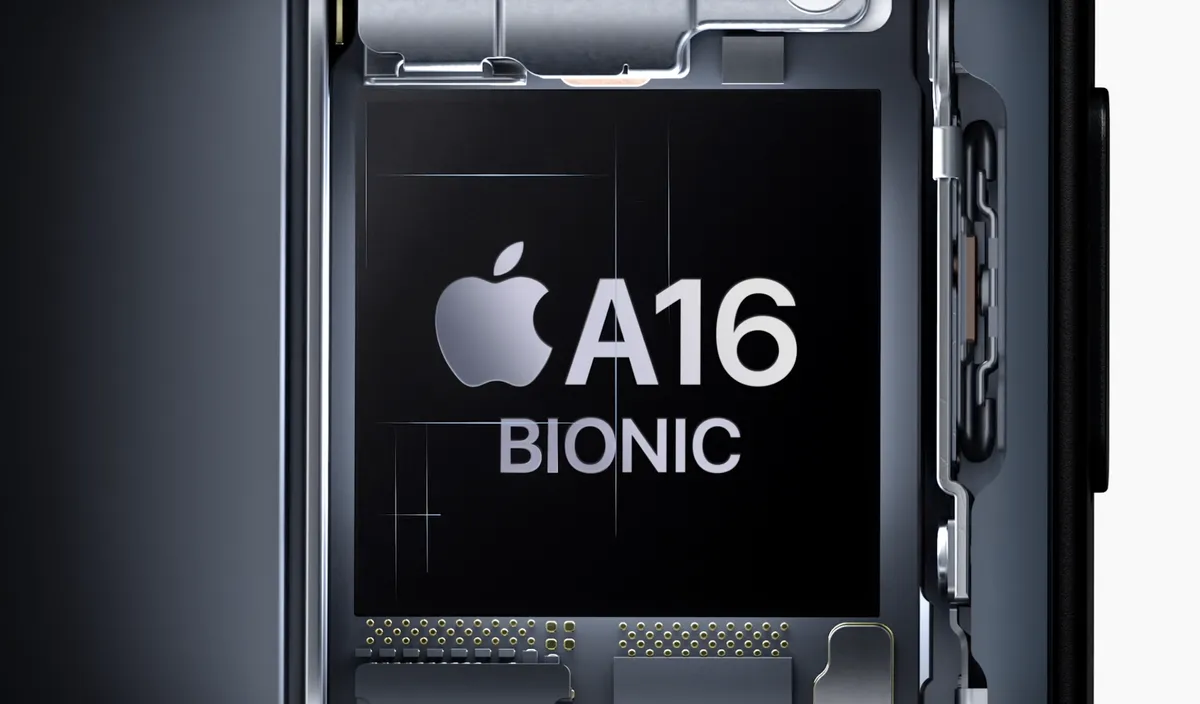
The camera system is all-new, boasting a 48MP main camera with a 26mm focal length and an f/1.6 aperture. Under the hood, the devices feature the A16 Bionic chip, which has two high-performance cores, four efficiency cores, and a 5-core GPU. Enhanced connectivity is also on offer, thanks to a second-generation ultra-wideband chip that allows for improved long-range connections between devices using the same technology.
In a first for Apple’s mainstream phones, USB Type-C is now the standard port for both data transfer and charging, although MagSafe and Qi 2 wireless options are still available. This USB-C standard will also extend to the next-gen AirPods Pro, and even the EarPods will see a USB-C variant. You’ll be able to charge AirPods or an Apple Watch directly from the new iPhones. Pricing starts at $799 for the iPhone 15 and $899 for the iPhone 15 Plus.
S9 SiP powers the new Apple Watch Series 9 and Apple Watch Ultra 2
Equipped with the newly introduced S9 SiP, both the Apple Watch Series 9 and the Ultra 2 mark a new era of wearable technology. The S9 SiP comes with an impressive 5.6 billion transistors and a GPU that’s 30% faster than its predecessor, the S8. It also incorporates a four-core neural engine, enabling more Siri requests to be processed directly on the watch.
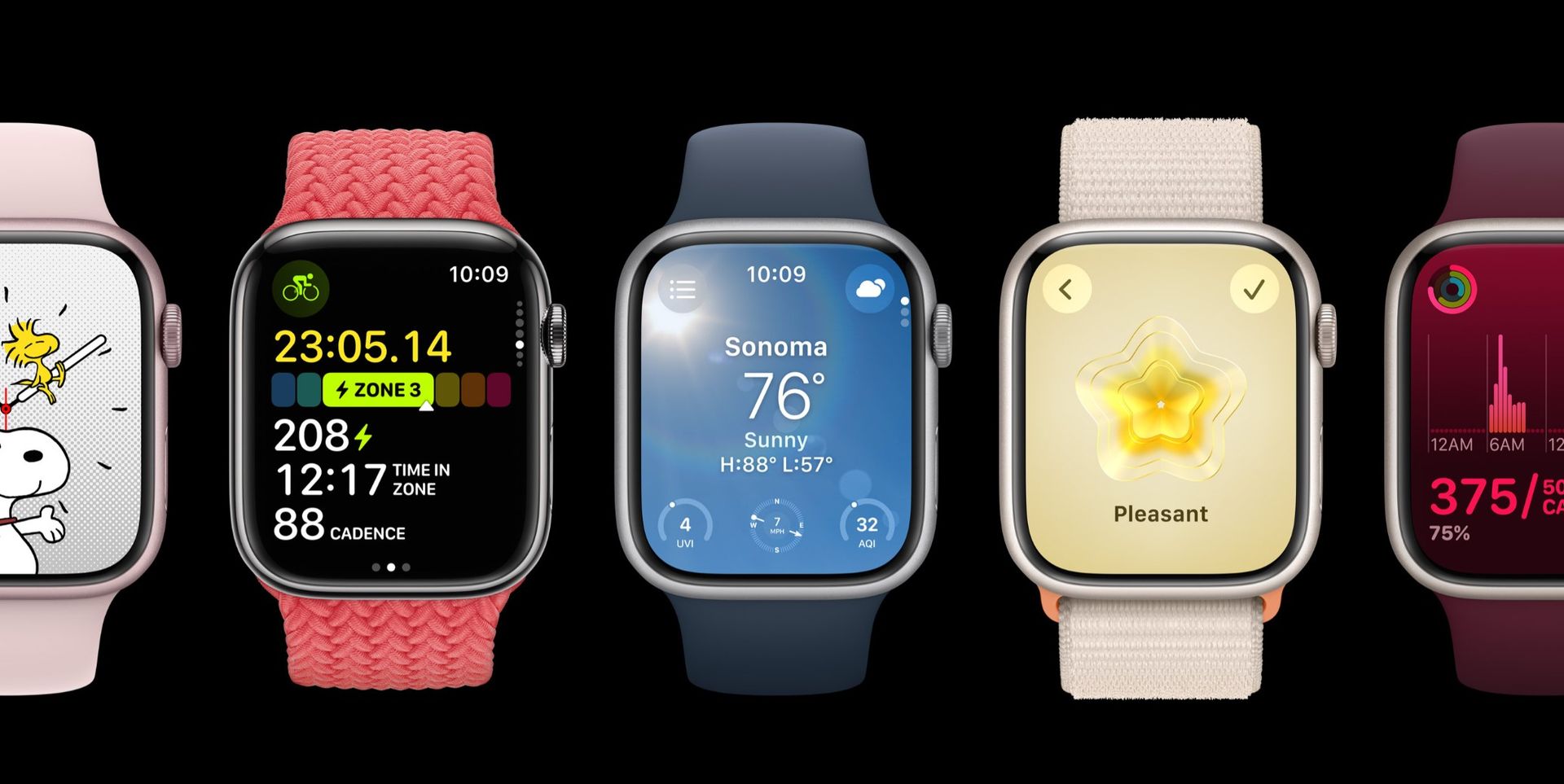
Battery life remains consistent at 18 hours for the Series 9, in line with Apple’s previous offerings. The neural cores introduce an innovative “double tap” gesture, allowing users to trigger an app’s main button by tapping their thumb and second finger together—a handy feature when your other hand is busy. Additionally, the S9 SiP includes a second-generation ultra-wideband chip for precise location tracking, a feature that’s also present in the iPhone 15.
Pricing for the Apple Watch Series 9 starts at $399, and for the Ultra 2, it kicks off at $799. Pre-orders are open now, and the watches will be available starting September 22.
Featured image credit: Kerem Gülen/Midjourney
- SEO Powered Content & PR Distribution. Get Amplified Today.
- PlatoData.Network Vertical Generative Ai. Empower Yourself. Access Here.
- PlatoAiStream. Web3 Intelligence. Knowledge Amplified. Access Here.
- PlatoESG. Automotive / EVs, Carbon, CleanTech, Energy, Environment, Solar, Waste Management. Access Here.
- PlatoHealth. Biotech and Clinical Trials Intelligence. Access Here.
- ChartPrime. Elevate your Trading Game with ChartPrime. Access Here.
- BlockOffsets. Modernizing Environmental Offset Ownership. Access Here.
- Source: https://dataconomy.com/2023/09/13/apple-a17-pro-gpu-powering-iphone-15-pro/
- :has
- :is
- :not
- $899
- $UP
- 000
- 1
- 10
- 14
- 15%
- 17
- 19
- 2024
- 22
- 28
- 3d
- 9
- a
- ability
- Able
- According
- Action
- adding
- Additionally
- Adoption
- advanced
- AI
- ai investments
- All
- Allowing
- allows
- also
- alternatives
- Although
- an
- and
- announced
- Another
- app
- Apple
- Apple Watch
- apps
- architecture
- ARE
- AS
- At
- attention
- attracted
- available
- BE
- been
- begin
- being
- between
- Billion
- Blue
- boasting
- boasts
- boost
- borders
- both
- bound
- bring
- Brings
- build
- busy
- but
- button
- by
- camera
- cameras
- CAN
- capabilities
- capability
- capable
- charge
- charging
- chip
- COM
- come
- comes
- compact
- Company’s
- compared
- Complement
- compromising
- computational power
- computing
- Connections
- Connectivity
- consistent
- Console
- controller
- Core
- Counterpart
- CPU
- credit
- custom
- customizable
- data
- debuting
- delivers
- Design
- designed
- developers
- Devices
- different
- directly
- displayed
- displays
- Division
- double
- dynamic
- efficiency
- enabling
- Engine
- enhanced
- enhancing
- enthusiasts
- Era
- Even
- EVER
- expect
- Experiences
- extend
- external
- factor
- faster
- Feature
- Features
- Find
- finger
- First
- Flexibility
- focal
- For
- form
- found
- four
- Friday
- from
- functionalities
- further
- Gains
- game
- game-changer
- Games
- gaming
- generative
- Generative AI
- genshin impact
- gesture
- Goes
- GPU
- grade
- granting
- graphics
- greater
- Green
- groundbreaking
- hand
- Handling
- handy
- Have
- High
- high-performance
- hood
- HOURS
- houses
- http
- HTTPS
- ideal
- image
- Impact
- Impacts
- impressive
- improved
- improvements
- in
- includes
- Incorporated
- incorporates
- innovative
- insight
- into
- intriguing
- introduce
- introduced
- Introduces
- Investments
- iOS
- iPhone
- iphone 14
- island
- IT
- ITS
- jpg
- Kicks
- landscape
- larger
- Last
- later
- launch
- layer
- Length
- Lens
- Life
- lighter
- like
- Line
- List
- location
- location tracking
- mac
- Main
- Mainstream
- maintaining
- major
- Making
- mark
- material
- max
- max-width
- mesh
- Mirage
- Mobile
- Mobile gaming
- Mode
- model
- models
- more
- Moreover
- most
- my
- Neural
- New
- newly
- next
- night
- novel
- now
- of
- off
- offer
- Offerings
- Offers
- Officially
- on
- ONE
- only
- open
- Operations
- optical
- opting
- Option
- Options
- or
- originally
- Other
- Outperform
- over
- PC
- per
- performance
- phones
- photography
- Place
- plans
- plato
- Plato Data Intelligence
- PlatoData
- plus
- potentially
- power
- powerful
- powerhouses
- Powering
- powers
- precise
- Precision
- predecessor
- present
- previous
- pricing
- primary
- Pro
- process
- processed
- professional
- promising
- providing
- Qi
- quality
- quicker
- RAY
- receives
- recording
- Releases
- remains
- requests
- Resident Evil 4
- resident evil village
- revamped
- roster
- same
- Screen
- Second
- see
- seen
- September
- Series
- set
- Sets
- setting
- settings
- settles
- Shoot
- shooting
- showcased
- significant
- significantly
- siri
- SIX
- Size
- solid
- Soon
- speed
- speeds
- Stage
- Stainless Steel
- standard
- Starting
- starts
- staying
- steel
- Step
- stepping
- Still
- storage
- Strategy
- Stunning
- such
- support
- Supports
- swiftly
- Switch
- system
- Take
- tapping
- team
- Technology
- terms
- than
- thanks
- that
- The
- their
- These
- this
- times
- Titanium
- titles
- to
- Tracing
- Tracking
- traditional
- transfer
- Transferring
- Transformation
- transformative
- trigger
- Trillion
- true
- two
- Ubisoft
- Ultra
- under
- unit
- unparalleled
- Update
- upgraded
- usb
- USB-C
- use
- users
- using
- Variant
- variety
- version
- Video
- viewing
- Village
- vision
- Watch
- watches
- we
- wearable
- wearable technology
- webp
- WELL
- were
- when
- which
- while
- WHO
- will
- wireless
- with
- without
- yellow
- Your
- zephyrnet
- zoom












